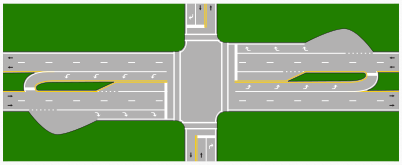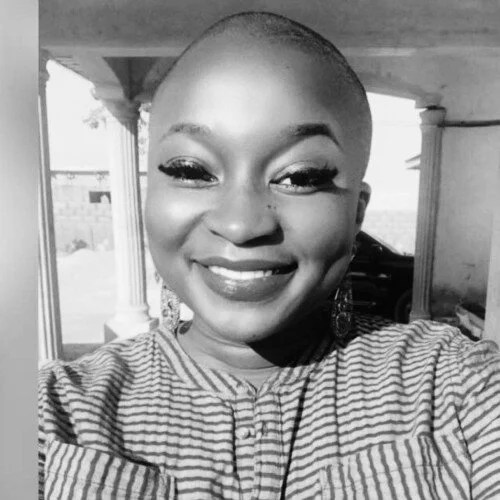Getting Comfortable in Michigan, Chapter Two: Making Left-Hand Turns
/Driving culture is huge in the United States. Except for New York City and a few other crowded metropolises, cars are an American way of life.
Born to drive: the author poses with his first Buick, won when his ticket was drawn at a metro-Detroit raffle. (Also pictured: the author’s dog, Rocky.)
The U.S. has a history of cheap gasoline (except in the past decade). It has vast spaces to traverse. And it has a population of independent citizens who want to go somewhere WHEN they want to go somewhere. We can also thank Henry Ford, who realized that sales of his early models depended on their being affordable to the working class. As a young driver in Detroit, MI (aka the Motor City), I got accustomed to making “Michigan left turns.” This involves driving through an intersection in the left lane, making a u-turn across a median, and then coming back to the intersection to make a right turn.
image via Wikipedia
As I got older, the name occurred ethnocentric to me. Why call it a “Michigan” left? Surely other states have this traffic feature as well? As it turns out, no they don’t. This idiosyncratic turning mechanism was adopted by the state’s Department of Transportation in the 1960s, the only state in the nation.
Although it is quirky, traffic engineers will tell you that it reduces accidents. By sending left-turn drivers past an intersection—via deceleration and acceleration lanes—and eventually making a right-hand turn, there are fewer broadside collisions in intersections. Broadsides are among the deadliest accidents and happen when turning vehicles misjudge oncoming traffic or don’t see it at all. Michigan left turns only expose drivers to glancing blows, instead of the deadlier 90º impacts also known as T-boning.
Michigan lefts help prevent broadside collisions (also called T-boning) as in this photo. Safety engineers also report fewer pedestrian accidents with Michigan left turns. via jalopnik.com
For narrow highways, a standard Michigan left may be too tight for turning, so engineers have added a feature called a “bulbout.” Below is a diagram of a bulbout in Grand Haven, MI, about 10 miles from my house. It allows u-turn drivers extra space to complete the turn before straightening out their vehicle for the eventual right turn.
image via Wikipedia
A similar attempt to enhance turning safety is done through the “jughandle” turns in over a dozen U.S. states. They are particularly associated with New Jersey.
Because they also cause drivers to drive extra distances and wait extra time, jughandles are unpopular with some drivers. Recently, the New Jersey legislature introduced a bill to outlaw future construction.
With over 700 intersections designed with the Michigan left-turn, this feature is in no danger of disappearing from my state anytime soon.
For newcomers here, welcome to Michigan. I wish you safe driving and safe left turns!








